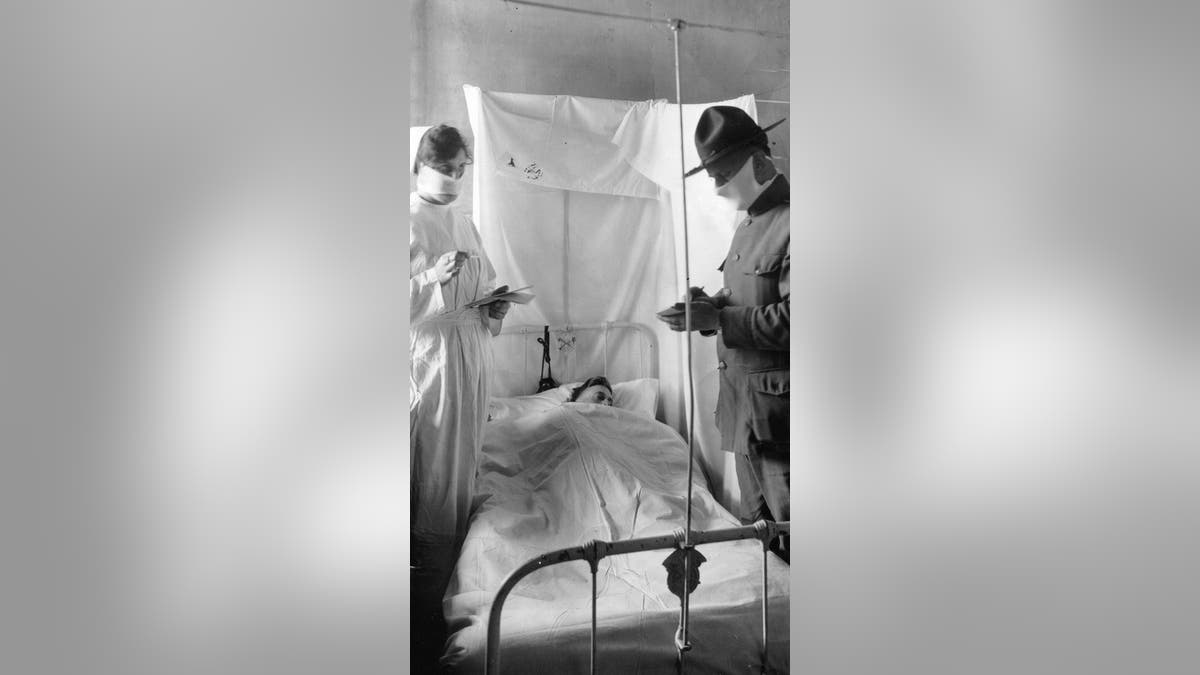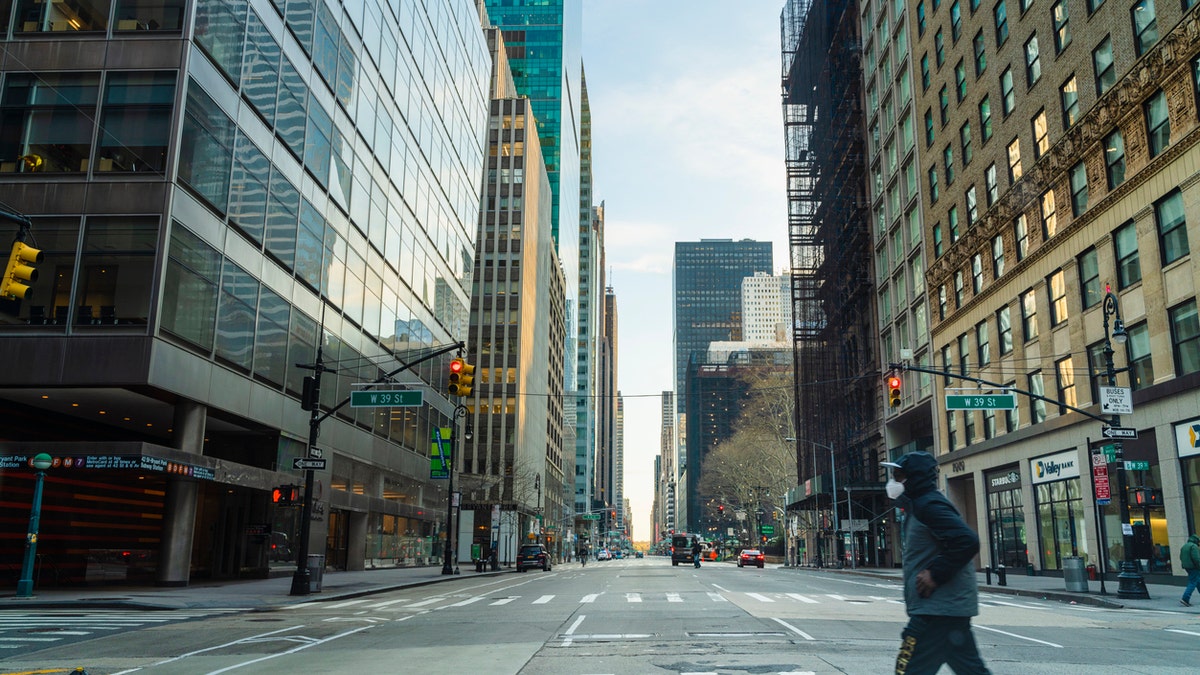Fox News Flash top headlines for August 14
Fox News Flash top headlines are here. Check out what's clicking on Foxnews.com.
The first two months of the city's COVID-19 pandemic were comparable to the number of deaths during the peak of the 1918 flu in New York City, according to a new study.
Researchers specifically examined New York City, comparing all-cause mortality during the peak of the 1918 flu to the earlier months of the COVID-19 pandemic, when the city suffered the most.
“What we want people to know is that this has 1918 potential,” lead author Dr. Jeremy Faust told CNBC. “This is not something to just shrug off like the flu.” Faust specializes in emergency medicine at Brigham and Women's Hospital and teaches at Harvard Medical School.
The study was published Thursday in JAMA Network Open.
MORE THAN 100 YEARS BEFORE CORONAVIRUS, THE SPANISH FLU PANDEMIC RAVAGED THE GLOBE

Masks and cubicles used in USA General Hospital No 4, Fort Porter, New York, 1918. Patients' beds are reversed, alternately so breath of one patient will not be directed toward the face of another. (Photo by PhotoQuest/Getty Images)
Public data was compiled from the Centers for Disease Control and Prevention, the New York City Department of Health and Mental Hygiene and the U.S. Census Bureau.
During the peak of the 1918 H1N1 influenza, study authors said, a total of 31,589 all-cause deaths took place among 5,5 million city residents. During the early period of the COVID-19 outbreak in NYC, 33,465 all-cause deaths among 8.28 million residents, they wrote.
Researchers concluded that excess deaths during the peak of the 1918 flu pandemic were “higher than but comparable to” those observed during the first two months of the COVID-19 outbreak in NYC.
The study comes amid more than 20 million global COVID-19 infections and at least 760,880 deaths around the world, according to data from Johns Hopkins University. The U.S. tops the world in coronavirus deaths with at least 167,528 lives lost.
Study authors said during the 1918 flu pandemic, there were about 50 million related deaths worldwide, including 675,000 in the U.S.
AMERICA RELEARNING THE LESSONS OF THE 1918 SPANISH FLU PANDEMIC

A man wearing protective mask crosses 6th Avenue of Americas in Midtown Manhattan in April, deserted because of the city lockdown caused by COVID-19 pandemic. (iStock)
To be sure, there have been many advances in medical interventions since 1918, such as mechanical ventilation, kidney replacement therapy, and standard resuscitation, among others, researchers said.
After accounting for improvements in hygiene and other achievements in public health and safety, study authors said the increase in deaths in the city earlier this year was actually “substantially greater” than that seen at the peak of the 1918 flu pandemic.
“If insufficiently treated, SARS-CoV-2 infection may have comparable or greater mortality than 1918 H1N1 influenza virus infection," researchers wrote referring to the official name of the new coronavirus.
Researchers said one limitation of the study is that the number of prevented deaths from COVID-19 due to these medical advances is unknown.
The team said their findings may help “contextualize the unusual magnitude of the COVID-19 pandemic, leading to more prudent policies” to lower virus spread and ease the burden on hospitals.

